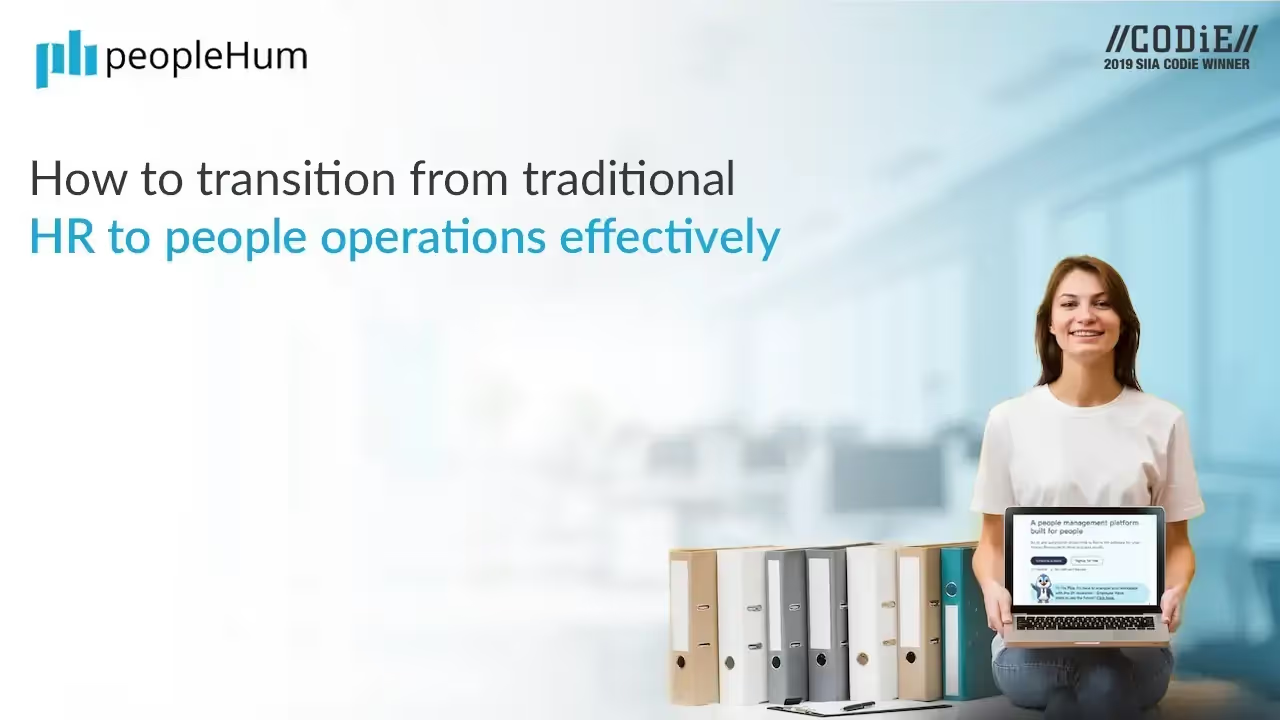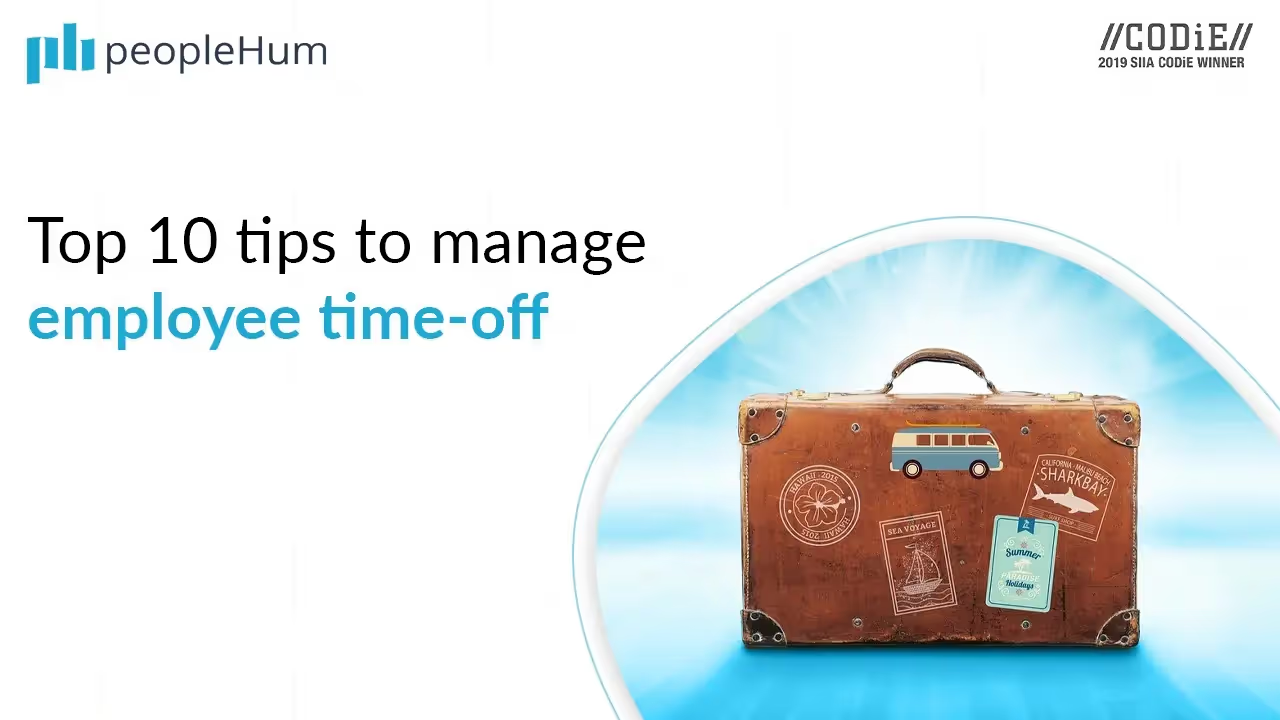Hello, reader. For this article, I’m going to assume that you’re just the Average Joe who has a basic idea of the workings of organizational HR.
So, Average Joe, what comes to mind when you read the term People Operations?
“It’s just a fancy way of describing HR.”
Well, it is reasonable to think of it as a rebranding of the traditional HR department. But if that’s what it was, then I wouldn’t be dedicating an entire article to it. People Operations, or People Ops, for short, is so much more than an easy paint job.
You’ve heard this more often than you would have wished for – but post-pandemic, business operations, work patterns and our values & beliefs have gone through a tremendous change. To keep pace with these changes and to thrive in the post-pandemic work environment, businesses need to shift their HR focus to a People Operations model.
A business mindset that knows how to transition from traditional HR to People Operations will move away from perceiving its operations and HR processes as mechanical entities and will acknowledge them are people who bring purpose to their roles and true satisfaction to customers’ experiences.
The transition from traditional HR to People operations is critical for the success of businesses today. So, let’s dig in by starting from the basics.
What is People Operations?
“Putting employees first,” is the directive of People Operations. It is the overall management of the workforce in a company and is considered a business function within human resources. With a scope that’s broader than traditional HR, People Ops focuses on employee training, development, engagement, and all actions that help employees be productive at work.
From the moment of hire until the moment they retire, People Ops plays the strategic role of demonstrating the critical roles that each team member plays in making the company successful.
The origins of the term come from a concept that developed from a rather perceptive mindset change in the early 2000s.
The term People Operations owes its origins to a little attrition problem in the early 2000s when Google’s first Head of People, Laszlo Bock, started noticing how many women were leaving the company after giving birth. To solve the problem, Bock decided to investigate.
As Slate explains, “like a majority of Silicon Valley software firms, Google is staffed mostly by men, and executives have long made it a priority to increase the number of female employees. But the fact that women were leaving Google wasn’t just a gender equity problem — it was affecting the company’s bottom line.”
As a company competing for talent, the problem was costly, and Bock wanted to resolve it. In 2007, he changed the way the company handled maternity leave in the hopes of giving Google's female employees what they needed to stay after giving birth. New mothers were given 5 months of paid leave with full benefits, which they could divide and use however they saw fit.
And, thus, People Operations was born.
The comparison between People Ops focus and Traditional HR focus
Conventionally, traditional HR functions took an insular approach to manage organizational processes, with a concentration on employee tracking, processes and productivity, and policies and activities.
These processes will continue to exist even when organizations adopt a People Operations system. However, through employee self service, it is expected that they will take ownership of their outcomes. Time and productivity tracking functions are automated, allowing people to be more effective and focus on the big picture of the overall employee experience.
Here’s how today’s People Ops focus compares to the older Traditional HR focus:
Then - Traditional HR Focus:
Process
Administration
Activities
Tracking
Instinct
HRIS
Now - People Operations Focus:
People
Operations
Outcomes
Experience
Data
People Operations Platform
So, while, today, traditional HR is more focused on the practical aspects of employee management (including legal, ethical, d structural), People Operations proactively focuses on employee management, retention, leadership and management strategies. It’s not just the ends that matter, but also the means.

What is the life cycle of People Operations?
People Operations, as a business function, focuses on the life cycle of an employee's experience with the company. It begins with the creation of a new job role before the employee is even aware that they are needed at the company. It affects every aspect of the employee experience and concludes when the employee leaves the organisation entirely. This implies that they are no longer:
- Paying for health insurance
- On severance
- Drawing a pension
The employee is thus a part of the People Operations life cycle until they have completely separated from the company.
What is the People Operations Mindset?
Companies that adopt a People Operations mindset bring HR to the leadership table. So, in today’s dynamic work environment, the value of a function is recognized, irrespective of whether it is a revenue-generating or a supporting staff role.
When businesses transition from traditional HR to People Operations mindset:
• Interdependencies are examined:
The company carefully considers its various touchpoints with the new employee when a new position is created.
• Functions are defined clearly:
Job analyses, job descriptions, duties relating to performance goals and outcomes, career advancement, and ongoing training requirements are all identified.
• The job position incorporates business objectives:
Employee goals are established with measurable metrics that are linked to the organization's stated purpose and mission as well as its quarterly and annual goals.
• Qualifications and abilities of candidates are described:
Those who are most familiar with the functions are the most knowledgeable about what it takes to make them successful. When HR and the business collaborate to define these qualities for the ideal candidate, there is a better chance of making a good hire and having a happy employee.
• Succession plans are developed:
Understanding what roles must be included in succession planning is an important part of keeping your employees happy and healthy. The stress that comes with not being able to advance in one's career creates a dysfunctional environment.
The departmental transition from Traditional HR to People Operations
It is not easy to make the transition from traditional HR to People Operations. Shifting from a traditional mindset to a new perspective would imply major changes for everyone. Business leaders must recognise the value that staff processes provide, and HR must move beyond forms and rule books to broaden the definition of people operations.
Let's break down each major function within HR and discuss briefly how this mindset shift begins to shift the group to a new way of doing business. However, before we proceed, it is crucial to recognise that the majority of HR professionals put in a lot of effort and are overworked by the procedures they must follow. Not that individual HR professionals are ineffective—far from it—but the processes themselves require improvement.
People Operations focuses on the individual rather than the task at hand. That is a significant mental shift.
So, let's get started.
Benefits and Compensation
Traditional HR
Benefits were designed with a one-size-fits-all approach. To improve analysis and market pricing, jobs were created to conform to industry-defined standards.
People Operations
Benefits are menu-driven, recognising that team members have a wide range of life experiences and well-being needs. Jobs are defined to fit what the business requires the functionality to be for the organisation and are market-priced to reflect changes in the employment environment. Planning for a career path takes new roles into account.
Employee development and training
Traditional HR
The emphasis was on mandatory regulatory-driven training and basic functions.
People Operations
Performance plans, career paths, and schedules all include provisions for training and development. They include instruction on setting personal goals that are compatible with growth for both people and businesses.
Employee Relations
Traditional HR
Concerns and complaints were frequently handled in a way that favoured the company and management. ER consultants were only available to managers.
People Operations
Regardless of their position or length of employment, employees are free to privately voice their concerns and ask for guidance.

Organizational and leadership development
Traditional HR
This group's access was restricted to the C-Suite alone. They alone are those who gain from learning how to lead more successfully.
People Operations
The objective is to maximise the performance of the company. The process is incorporated into career pathing, and participants have access to opportunities for personal growth like learning how to give and receive feedback well as well as how to determine the best career path for their unique strengths.
Payroll
Traditional HR
The procedure was formal and impersonal. Employees suffered as a result of payroll errors.
People Operations
When resolving payroll-related problems, consideration for team members is expected. Priority should be given to speedy resolution.
Recruiting
Traditional HR
Due to overwhelming responses, the focus was on ineffective technology and manufacturing methods to reduce the candidate pool.
People Operations
Utilize artificial intelligence (AI) processes that evaluate appropriate minimum requirements for positions and finish necessary compliance forms so that the emphasis can be on conducting effective interviews, identifying the best fit between the candidate and the company, and developing and implementing an efficient employee onboarding process.
Diversity, Equity and Inclusion
Traditional HR
The unintended consequence of segmenting and separating identified groups was divisive.
People Operations
The objective is to forge a solid corporate culture and enhance the company's reputation. The goal is to make the entire organisation healthier and more cohesive through education and appreciation of individual differences and strengths.
Benefits of a transition from traditional HR to People Operations
There is a mutual benefit when one adopts a people operations mindset. An organisation with a focus on people operations understands that team members must be heard, seen, and valued.
Everyone benefits when your employees believe they are valued as individuals and contribute to the company's larger goals. Both the team members and the business will prosper when this happens.



































.avif)














